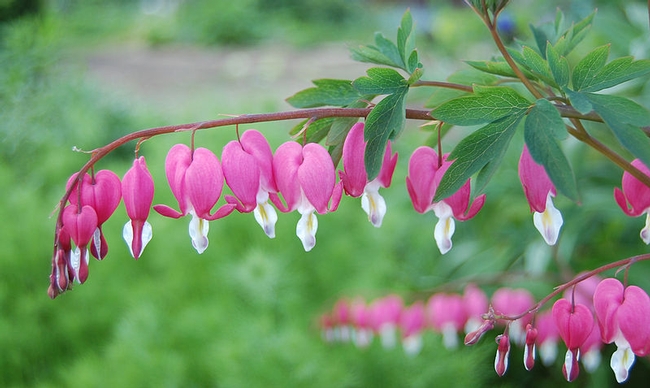I love the beautiful foliage of the bleeding heart almost as much as I love it's sweet, delicate, dainty flower. Dicentra spp. (Bleeding heart) is a plant that presents almost no diseases, and can, if well established, last for years. The plant consists of fern like foliage with heart shaped flowers horizontally placed along its arching stems. Colors of the blooms come in yellow, pink, rose, purple, or white, and does well in most growing zones.
Propagation can occur through the planting of seedlings. However, these plants cross or hybridize easily and your plants could look very different from the parent. Your best bet is to propagate by division. That way, you can be sure that the plants bloom will turn out the color you planned on.
Bleeding heart looks charming dotted throughout a bed of low growing ground cover or amongst hosta or coral bells, as it goes dormant in summer, and will leave gaps in your landscape. A mass of bleeding hearts in a shaded border can be quite dramatic.
These lovely plants need rich, light soil, and partial or full shade. Regular watering is advised. Never let water stand around their roots. Foliage dies down in mild winter climates such as ours, so mark the area to avoid digging up the roots in their dormant season. Fertilize with compost or fish emulsion early in the spring, as soon as you see new growth. Mix the fish emulsion with water as directed.
I would like to point out one more positive note in my book for these gems. Under the right circumstances, they reseed. Seedlings may need to be pulled to prevent your other perennials from being crowded out. They pull easily, enabling you to share with your gardening friends--a gift most likely far more appreciated than the proverbial bag of summer zucchini.
One gentle warning. The sap from the roots can cause an irritation to the skin if one tends toward skin allergies. Gloves are highly advisable. Apparently, deer stay away from bleeding heart due to its toxicity.
Attached Images:

Dicentra spectabilis. (photo from Wikipedia.com)